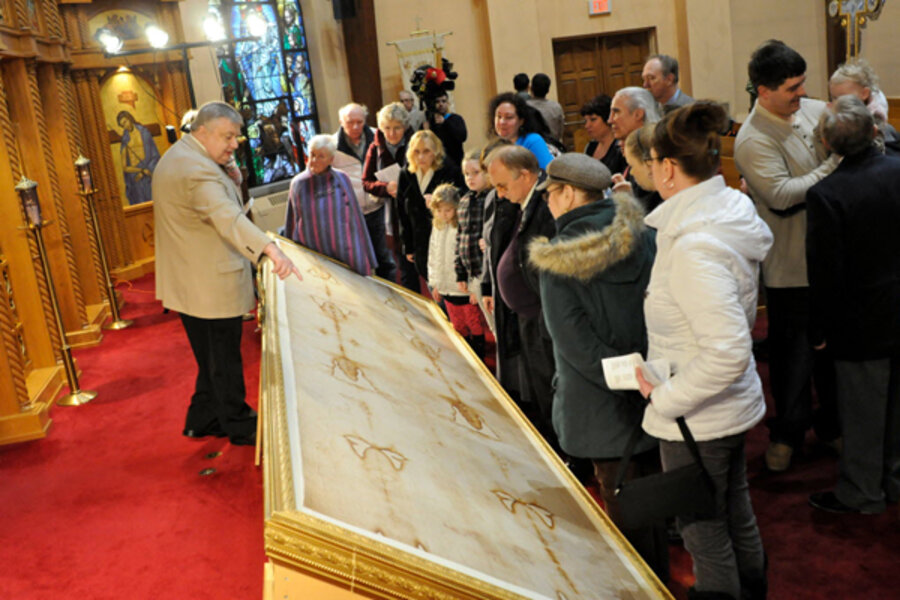Shroud of Turin authenticity up for debate again after new report
Loading...
The Shroud of Turin, an icon of faith and controversy among Christians, is back in the news.
The linen cloth, allegedly the burial shroud of Jesus, was closely examined in 1988 in laboratories in Switzerland, England and the United States using carbon-14 dating techniques, the Telegraph reports.
Those examinations of the shroud — which bears the image of a man's face and torso — dated the cloth from 1260 to 1390, supporting claims that it's merely an elaborate medieval hoax, as Jesus' life is thought to have come to an end in A.D. 33.
Some believers, however, insisted that the linen fibers used in the 1988 examinations were not from the original shroud, but rather from a portion of the cloth that had been repaired after suffering fire damage in the Middle Ages.
Now, scientists at the University of Padua in Italy have used infrared light and spectroscopy (the study of a physical object's interaction with electromagnetic radiation) to examine the shroud and found that it's actually much older, the Telegraph reports.
In his recent book, "Il Mistero della Sindone," translated as "The Mystery of the Shroud," (Rizzoli, 2013), Giulio Fanti, a professor of mechanical engineering at Padua University, said his analysis proves the shroud dates from 280 B.C. to A.D. 220 ? meaning it existed during Jesus' lifetime, the Guardian reports. [Religious Mysteries: 8 Alleged Relics of Jesus]
The Shroud of Turin is said to be the cloth that covered Jesus' body after the crucifiction. Previous examinations that dated the shroud to the Middle Ages mesh with historical records, which don't start mentioning the cloth until that time. But some researchers believe the shroud is older. Thomas de Wesselow, author of "The Sign: The Shroud of Turin and the Secret of the Resurrection" (Dutton Adult, 2012), argues that medieval artists did not paint in photorealistic style, and that a forged shroud created in the Middle Ages would be an anachronism.
That doesn't mean the shroud is evidence of a miracle, however, de Wesselow told LiveScience last year. He believes natural chemical reactions caused by a decomposing body and annoiting oils could have created the body imprint on the shroud, which may have then been used as evidence of Christ's resurrection.
For the first time in 30 years, the shroud will be shown on television this Saturday (March 30), the Guardian reports. Before leaving the papacy, Benedict XVI approved a special broadcast of the shroud to be held at the Turin Cathedral, where the cloth is preserved in a climate-controlled case.
And for those who want an even more intimate examination of the cloth, a new mobile app, Shroud 2.0, was just released on Good Friday (March 29), Zenit.org reports.
Designed in collaboration with the Museum of the Holy Shroud and the Archdiocese of Turin, Shroud 2.0 synthesizes 1,649 high-definition photographs into a single 12-billion-pixel image. An Android version is also being developed, Zenit reports.
Follow Marc Lallanilla on Twitter and Google+. Follow us @livescience, Facebook & Google+. Original article onLiveScience.com.







